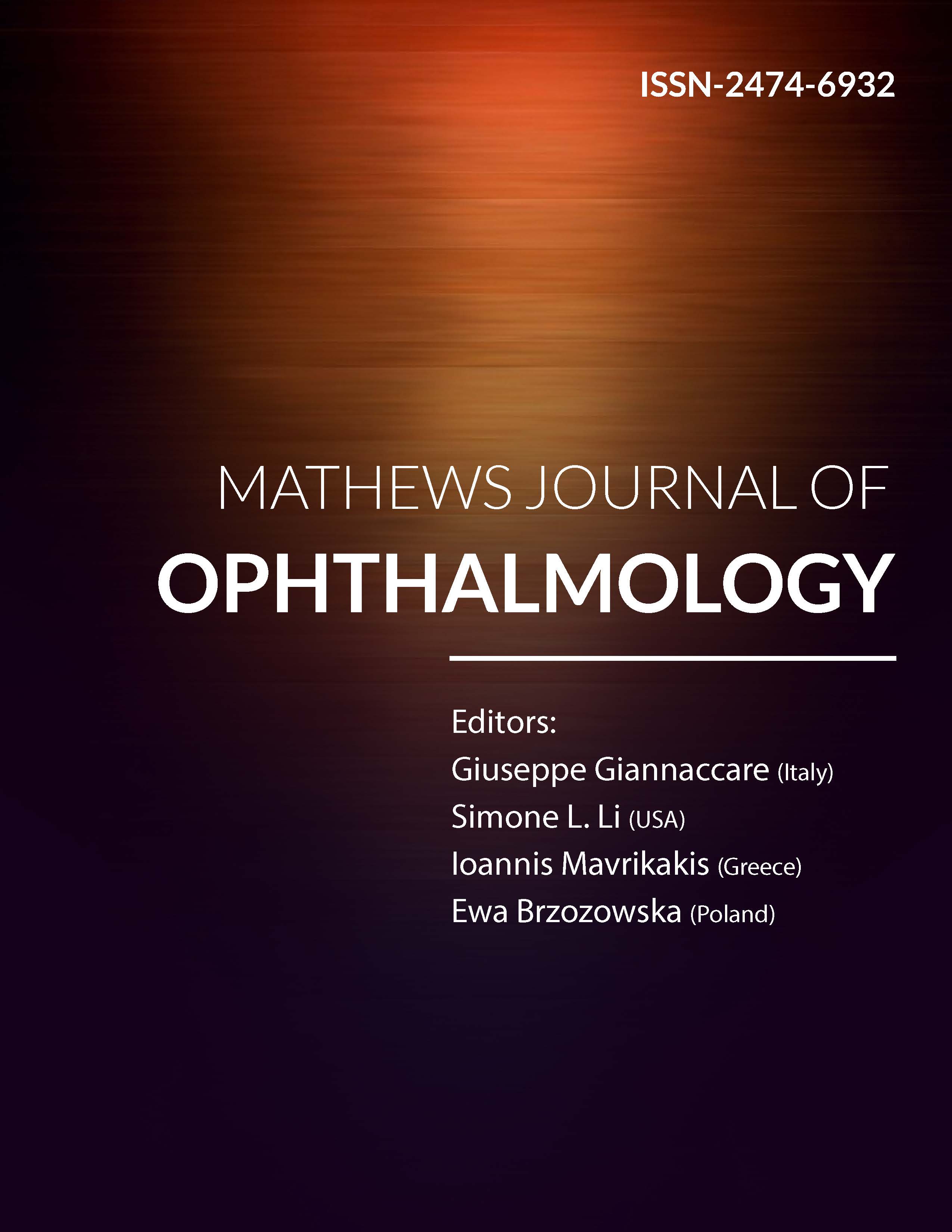
Information Links
Previous Issues Volume 1, Issue 1 - 2016
Awareness and Knowledge of Ocular Effects of Diabetes among Diabetics-Evidence from a Hospital Based Study
Mohammed Abdul-Kabir1,Bright Asare-Bediako1,David Ben Kumah1,Eghonghon Ehianata Onoikhua2
1Department of Optometry and Visual Science, Kwame Nkrumah University of Science and Technology, Kumasi, Ghana.
2Department of Optometry, Madonna University, Elele, Rivers State, Nigeria.
Corresponding Author: Mohammed Abdul-Kabir, Department of Optometry and Visual Science, B9 COS Building, KNUSTKumasi, Ghana. Tel: +233266307211; E-Mail: [email protected]
Received Date: 12 Feb 2016
Accepted Date: 05 May 2016
Published Date: 24 May 2016
Copyright © 2016 Abdul-Kabir M
Citation: Abdul-Kabir M, Asare-Bediako B, BenKumah D, Onoikhua E, et al. (2016). Awareness and Knowledge of Ocular Effects of Diabetes among Diabetics- Evidence from a Hospital Based Study. Mathews J Ophthalmol. 1(1): 001.
ABSTRACT
Background:Diabetes mellitus is reaching epidemic proportions in many countries, and the impact of vision loss due to diabetic eye disease on public health is a major concern. Unfortunately, there is a lack of awareness about the existing interventions for preventing diabetic eye diseases and the management of complications. This study was conducted to evaluate the level of awareness and knowledge of ocular complications of diabetic patients in a teaching hospital in Ghana.
Methods:The study was a descriptive cross sectional study. A detailed interview-guided questionnaire was used to obtain qualitative information on the level of awareness and knowledge about ocular complications of diabetes and attitude towards preventing diabetic ocular complications among diabetic patients. Completed data was entered in Microsoft Excel 2010 and SPSS-version 20.0 for Windows and analyzed and statistical significance was set at p < 0.05.
Results:150 diabetic patients consented and took part in the study. There were more females (107) than males (43) with an overall age range between 11-90 years. The age range with the highest number of patients was 61-70 years (37.3%). The level of education with the highest number of respondents was junior high school level (J.H.S), which represented 25.3% of patients studied. Majority (59.3%) of respondents had low level of education (up to the junior high school level). Out of the 150 patients, a total of 122 (74.6%) were aware that diabetes had effects on the eyes and vision. 22 (14.7%) patients responded that the condition had no effects on the eyes and 16 (10.7%) patients responded no idea. 69 (46%) patients had never visited the eye clinic before the study, 44 (29.3%) patients responded they visited the eye clinic only once a while and 17 patients only visited the eye clinic if their vision had reduced. 54 (36%) patients responded they were referred to seek eye care by their primary physician, while 96 (64%) patients responded they were not informed to seek eye care services upon first diagnoses.
Conclusion:There is still a gap to be filled with respect to level of awareness and knowledge of ocular effects of diabetes between diabetic patients of lower and higher level of literacy. It is important that public health efforts in the field are intensified, particularly in developing countries. Also, physicians should ensure that diabetics are adequately educated on the ocular complications of diabetes and the need for regular eye examinations.